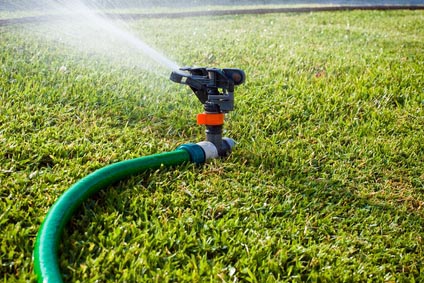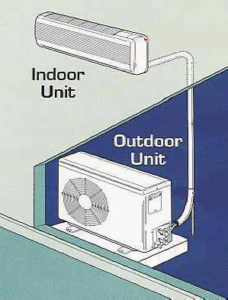 When you drive through your neighborhood, is your lawn the lush, green one that everyone envies, or is it the drab, brown one that you wish you could hide? Dream Home deserves a dreamy lawn. Keeping a lawn green, especially in the driest part of the summer, requires proper watering. Yet running out there with the hose and spraying it down, without a plan, means nothing more than wasted water.
When you drive through your neighborhood, is your lawn the lush, green one that everyone envies, or is it the drab, brown one that you wish you could hide? Dream Home deserves a dreamy lawn. Keeping a lawn green, especially in the driest part of the summer, requires proper watering. Yet running out there with the hose and spraying it down, without a plan, means nothing more than wasted water.
Check Your Equipment
Over the cold Midwest winter, the o-rings on your sprinkler heads and watering equipment can become dry and crack. These seals keep the connections between the hose and the sprayer or the sprinkler tight so water doesn’t leak. Leaking water can do a lot of damage, especially if it happens inside the walls. Check the o-rings at every connection throughout your water line, and remember that what comes off must go back on. In other words, if you remove an o-ring that’s 1/3 of an inch, it must be replaced with one the same size. If you aren’t sure of the size, use the AppleRubber.com o-ring chart for the metric conversion.
Also, check screens on your system and make sure they are debris-free. If any parts are worn out, replace them before you start watering for the season.
Know Your Seed
Before you water, learn what type of grass you have. The Midwest is considered a “cool season” zone, so your grass is likely bluegrass, fescues, ryegrass or Bermuda grass. Buffalograss and zoysia will also grow here, but for a shorter growing season.
Of these, fescues and buffalograss require the least amount of watering. If you have zoysia, you will need to water through dry seasons. The other types need to be watered deeply only when the soil shows signs of being dry.
Water Deeply and Infrequently
That neighbor who runs his sprinkler every night is actually doing more harm than good for his lawn. Instead, you should only water when the ground needs it. To test the ground, insert a knife into the soil to a depth of about five inches. If it comes out dry, not muddy, then it’s time to water. In most areas of the Midwest, this is once or twice a week, depending on the current weather. Plan to water in the morning before the temperatures heat up for the day.
When the ground needs to be watered, do so to a depth of about four to six inches. Use the same test to see how far down the water has soaked. Also, set the sprinkler so it waters at the rate the ground can absorb. If you’re seeing puddles of water, the water is coming too quickly.
Watering deeply in this way encourages deeper root growth, according to Lawn Care Mania. Lawns with deep roots will be better able to withstand the hot July and August temperatures or the occasional drought.
How to Handle a Drought
The Midwest sometimes experiences droughts, and you will need a lawn care plan during these times. Better Homes and Gardens recommends allowing the lawn to go dormant in a drought, which means allowing it to turn brown. This doesn’t mean the lawn is dead, and when the rains come again it will turn green quickly. If you don’t want a brown lawn, plant a drought-resistant seed, like buffalograss, and plan to add an inch of water a week during dry spells.
Keeping your grass green and lush throughout the summer isn’t too difficult, if you know how to water properly. With these tips, you can water smart, so your lawn will thrive all season long.
Want to receive more home tips and household advice?
Sign up to receive the Home Front Newsletter, a monthly newsletter published by Gettum Associaes, Inc an Indianapolis Indiana home remodeling contractor.
About the author:
Joseph Sanchez- Joe lives in the Midwest and writes about farming, agriculture and sustainable living.















